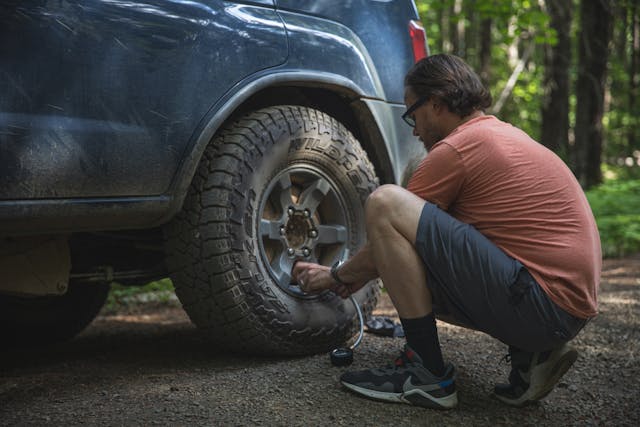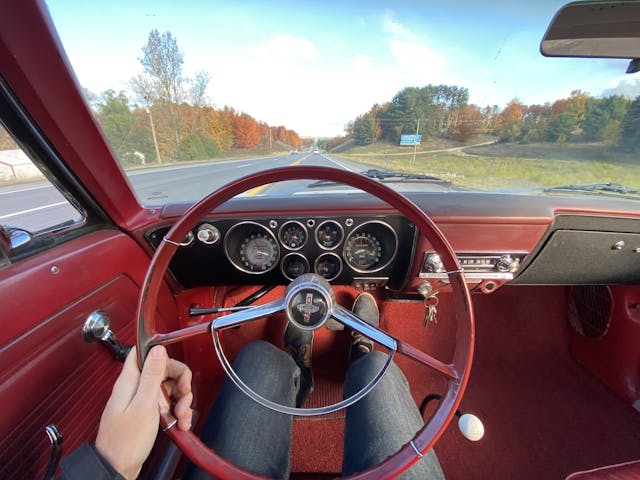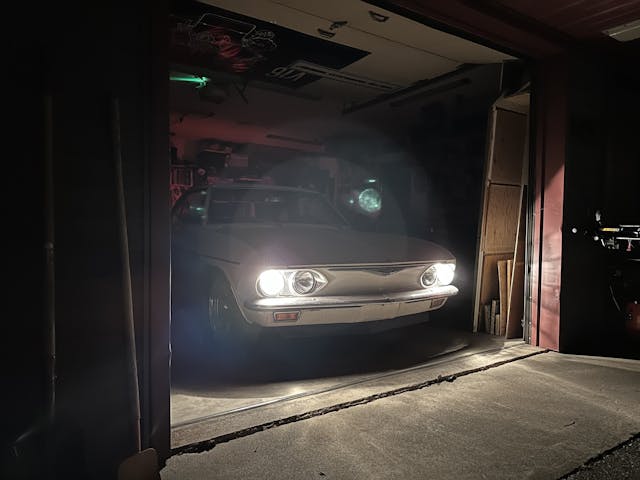Before Driving Your Vintage Car, Check These 6 Things
Getting out on the road and enjoying our vintage cars is the majority of the reason most of us own them. Driving is what it’s all about, but driving safely is always the best plan. Many vintage cars now have spent time with owners who may not have been born when their car was built; if you find yourself in that camp, you may still be learning the day-to-day and year-to-year upkeep of your vehicle. Let’s take a look at a few checks and pre-drive rituals that will keep you and your old car happy for many miles to come.
Most owners and drivers of aging cars are diligent about inspecting them, but usually only once—when they buy the vehicle. After the purchase, most slip into the assumption that “it was fine when I parked it,” which can lull you into thinking everything is—and will remain—fine. Oftentimes everything is fine, but when a critical component or system isn’t, you can put more just yourself at risk. That’s worst-case scenario, of course; at a minimum, making a habit of regular quick inspections can save a lot of frustration and towing charges.
Tires: Pressure and Condition

Tires are the only actual items that connect your multi-thousand-pound car to the road. We rely on those round rubber rings to not only grip the road surface but also to support the car. Having incorrect air pressure in the tires can produce unexpected changes in handling, cause a tire to build up heat and cause a blowout, or wear parts of the tire that aren’t designed to come in contact with the road.
Even a quick look while walking around the car is better than nothing, but make sure to check the pressure with a trusty gauge and look closer at the condition of the tread and sidewall. If you find an issue, that weekend drive you planned might get ruined, but that’s a whole lot better than finding the problem while going 55 mph and ruining a whole lot more.
Oil: Leaks, Level, and Condition

Engines live and die by the lubricants and other fluids contained within the block and heads. Just having enough oil and coolant will keep an engine alive far longer than some might think. Having clean and properly spec’d fluids will make a car run even longer and even better.
Taking a minute to pop the hood and pull the dipstick to confirm your car’s engine has the proper amount of oil is the bare minimum. Have a clean rag handy to wipe the dipstick clean and quickly inspect the oil for debris and color. A light amber is ideal, but tired engines can put a lot of combustion byproducts into oil relatively quickly, and those will turn oil darker. While you are thinking about fluids, take a peek under the car to confirm the oil leaks you might have did not get worse.
Steering: Is There Play?

A lot of people will say that old cars just have loose steering, but those people are only partially right. Vintage steering systems can feel less direct than modern designs but they should still be snug. Motion at the wheels should translate to motion at the front tires. After sliding into the driver’s seat, take a moment to observe the steering before starting the engine. This will help get an honest feel without the assistance of a power-steering pump, if your car is so equipped.
Lights

“How could anyone not notice a car as cool as mine?” We’ve all thought this while driving down the road, surrounded by homogeneous modern crossovers. The reality is a lot of drivers don’t care about vintage cars, and they have grown to expect vehicles to show daytime running lights, which vintage cars rarely have. An older vehicle can sneak up on many a modern driver, especially at dusk or in the early morning—you know, the best driving times.
That’s why it’s a good idea to do a quick walkaround or mirror check of the lights on all four corners of your car. Do your turn signals work? Has a bulb burned out? I like to turn on the lights of my Corvair before I open the garage door to see whether the headlights and turn signals work. I’ll also check the taillights—brake and running lights—in the rearview mirror, to see if they light up the back wall of the garage easily.
Brakes

Brakes, especially drum brakes, are notoriously difficult to inspect without some disassembly. One way I like to evaluate them is the hard/harder test. Before starting the engine, I push on the brake pedal with the force of a regular stop, such as I’d use when approaching a four-way stop, and hold that pressure for a moment to confirm the pedal does not sink further. After a short hold I then press harder, to mimic a panic stop, and again hold for a moment to ensure the system holds the pressure firm. I then release the pedal and ensure it returns to its correct position quickly and smoothly.
This works for both mechanical and hydraulic systems. Combine this simple test with a visual inspection of brake fluid level and condition, and you’ll have that much more peace of mind.
Throttle: Does It Stick?

The throttle is really fun to push, but more important than anything is the throttle’s return. Stuck throttles lead to bad situations. Before starting the engine, give the throttle a bump from fully closed to wide open and make sure it snaps shut quickly and without any binding. Many vintage cars use mechanical linkages or cables that can corrode or get grime in them which can slowly build up and cause problems. Best to catch such a problem while still in the garage or driveway.



Here Kyle lists checking carb linkage, to avoid being stuck at WOT! His photo is an overhead view of a Corvair 140, similar to mine. On the secondary carbs (with 1965 linkage), the only thing that returns these to closed throttle is the spring internal to the accelerator pump! Pulling the accelerator closed does nothing to close the secondaries! Don’t ask me how I know…
Fuel lines. They age, and some are prone to ethanol damage. Pay close attention to the ones under the hood, where a burst line can leak onto a hot surface.
I put extra large baking pans under the engine and tranny to catch drips for recycling. My large cardboard sheets are kept clean for sliding under the car instead of using a creeper.
Tires–Do they retain flat spots when rolling your ride out? They age in storage and in spite of still beautiful whitewalls and deep tread, are prone to cracking and tire failure. Don’t know how many years are too many, but found 20 years is too much. Swapped them under a non running vehicle ’cause they still hold air.
i did n ot put battery tender on 07 tbrd last winter battery went dead had to drive it 400 miles to pass nys inspection, last spring.
All six are well and good. But for oil, just summarize as check all fluids. Coolant, trans fluid, brake fluid, etc. just double check because gravity leaks will show themselves over months of sitting…